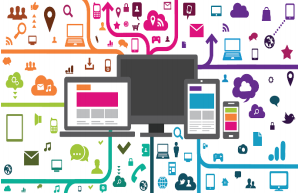Use of jargons is a key aspect of quick and effective communication in specialized fields. Jargons are words or phrases unique to that field and not used elsewhere. With the advent of smart phone, IT jargons have entered many aspects of generic human life in the last two decades. The world of company secretaries is no exception. This article takes one jargon for each alphabet and elaborates it to help company secretaries leverage the new emerging digital world.
26 IT Jargons
1. AAA –Authentication, Authorization, Accounting
• Authentication is the process of identifying a person usually based on their username, password and any other factor like OTP (One Time Password)
• Authorization-Process of granting or denying access to the program or application
• Accounting -keeping track of users and their activities
2. Bcc: Blind Carbon Copy, a mode of sending mails to recipients who are not visible to other recipients of the mail.
3. Cloud Computing: is the delivery of different IT services like software applications, tools and data storage through the Internet. Cloud computing not only provides these applications but also all the required computing hardware and operating systems required to run these services.
4. DRP: Disaster Recover Plan, a sub-sect of Business Continuity Plan that deals with contingency plan for providing continuity in accessing IT services and IT Assets.
5. ERR-Abbreviation for Error in the IT world.
6. FOSS –Free and Open Source Software-Software that is developed and made available by the developers to the users free of cost.
7. GOPS: Giga (billion) Operations Per Second -A unit of measurement of computing speed.
8. Hypertext-any text that contains links to other documents – words or phrases in the document that can be clicked by a reader and which cause another document to be retrieved and displayed.
9. ICANN –Internet Corporation for Assigned Name and Numbers, a non-profit corporation that is responsible for allocating IP address and managing the domain name system.
10. Junk Mail –Unsolicited mail that is not of value to the recipient.
11. Knowbot –Knowledge robots, designed to search files on the Internet “a robotic librarian.” It is a registered trademark of the Corporation for national Research Initiatives.
12. Link: A string of hypertext transfer protocol structured text that connects web pages on the internet. External links deal with web pages on other sites while internal links deal with pages on the same site
13. Malware: Programs with the intent to cause problems, also colloquially called virus.
14. NLP-Natural Language Processing: refers to the computer understanding, analysis, manipulation, and/or generation of natural language. NLP is a subfield of artificial intelligence and linguistics.
15. OCR-Optical Character Recognition: The technique of recognising printed text and turning it into computer input, to avoid the need for keyboard entry.
16. Pdf-Portable document format: a multi-platform file format developed by Adobe Systems. A PDF file captures document text, fonts, images, and even formatting of documents from a variety of applications.
17. QoS: Quality of Services: A measure of system performance and system availability.
18. RBAC-Role Based Access Control: RBAC is a strategy for implementing security policy management, specifically in the area of authorization. The idea behind RBAC is to define roles as sets of privileges to different systems that represent common access rights for users.
19. SaaS: Software as a Service: SaaS is a software distribution model in which applications are hosted by a vendor or service provider and made available to customers over a network.
20. TLD-Top Level Domain: the last (right-hand) part of a complete Domain Name. There are a large number of TLD’s, e.g. .biz, .com, .edu, .gov, .info, .int, .mil, .net, .org, and a collection of two-letter TLD’s corresponding to the standard two-letter country codes, e.g., .in, .us, .ca, .jp, etc.
21. UI-User Interface: The link between the user and a computer’s hardware or software that permits the user to work productively with a system or a program.
22. VDR-Virtual Data Room: a secure, Web-based virtual data room that complements or replaces the paper-based deal room that contains all relevant information needed during the due diligence phase.
23. Wiki-What I know is: Wiki is used to describe a collaborative (or community) project allowing visitors to edit webpages and add content for the benefit of the group or community. Wikipedia is the most common use of this technique.
24. XBRL-Extensible Business Reporting Language: a language for business financial data using XMLstyle tags.
25. Yyyy-mm-dd: The ISO standard formula for writing dates, which avoids the Century Date Change (Y2K) problem.
26. Zip –.zip, an open standard for compression and decompression used widely for PC download archives.


Leave A Comment